Proper wine storage is crucial to preserving the quality, flavor, and aroma of your favorite wines.
Whether you're a casual wine enthusiast or an avid collector, understanding the fundamentals of wine storage is essential.
In this comprehensive guide, we'll explore the key factors that affect wine storage and provide useful tips to help you create the ideal conditions at home.
Short Summary
- Proper wine storage is crucial for maintaining wine quality.
- Key factors: temperature, humidity, light, and vibration.
- Ideal temperature: 45°F (7°C) to 65°F (18°C).
- Humidity: 50-80%.
- Avoid direct sunlight and artificial light.
- Minimize vibrations to preserve wine quality.
- Store red wines at 55°F to 60°F for aging.
- White wines at 40°F to 50°F for freshness.
- Sparkling wines at 45°F upright to preserve carbonation.
- Store wine bottles horizontally to keep the cork moist.
- Avoid long-term storage in the refrigerator.
- Create an organized inventory of your collection.
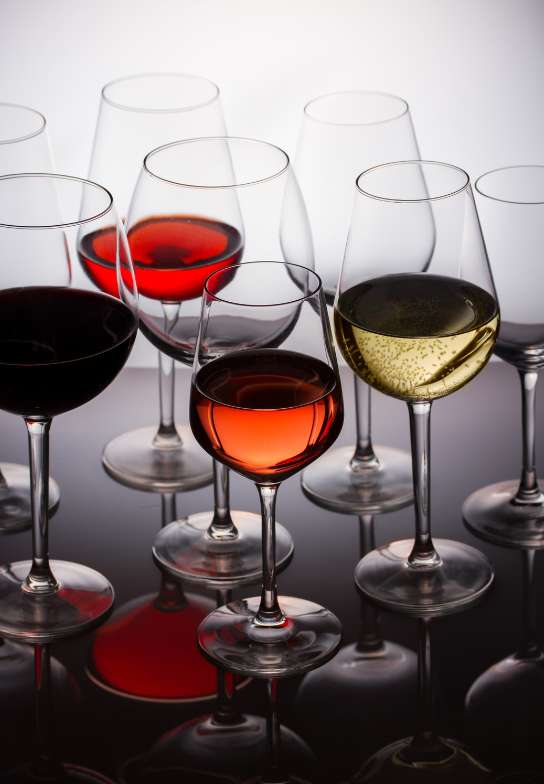
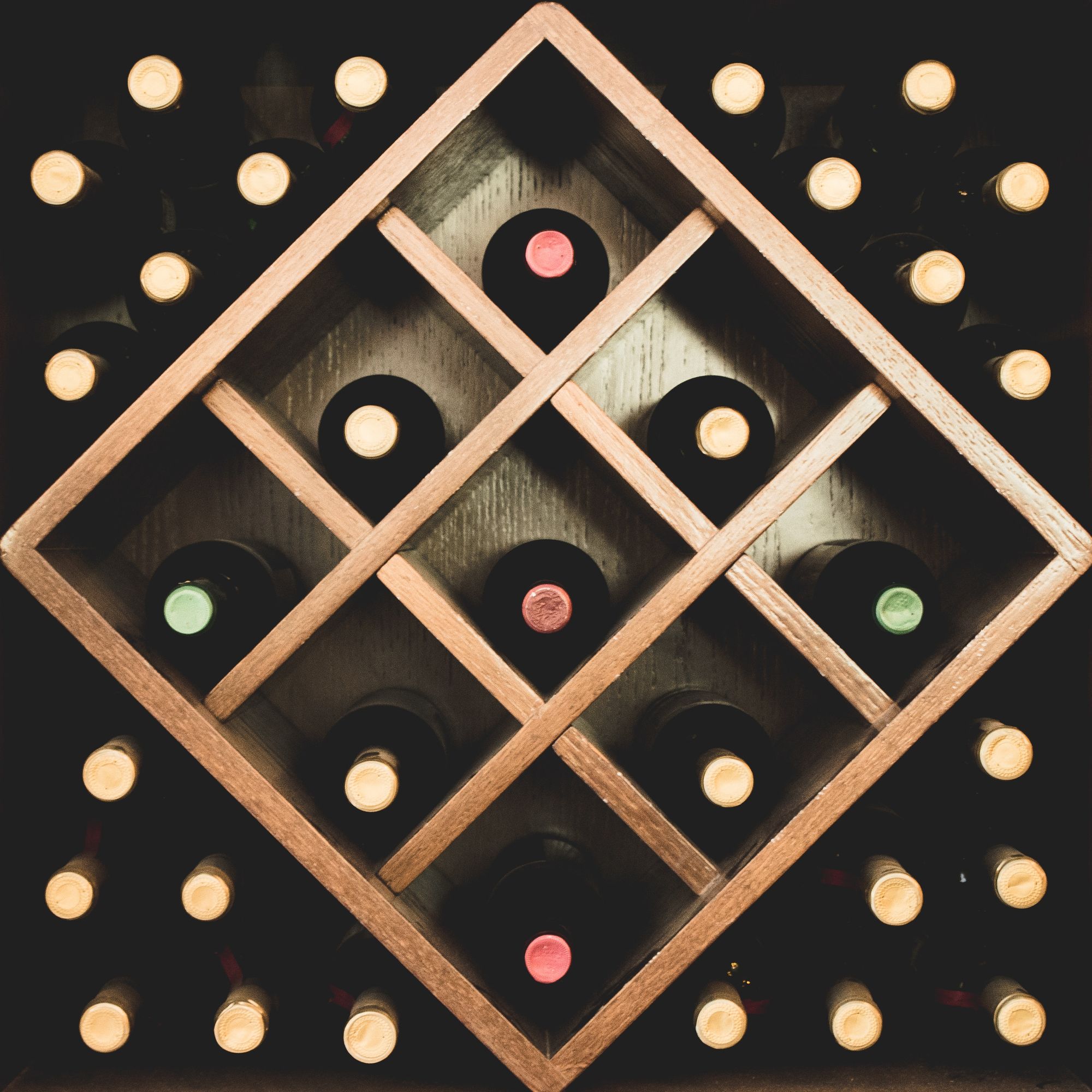
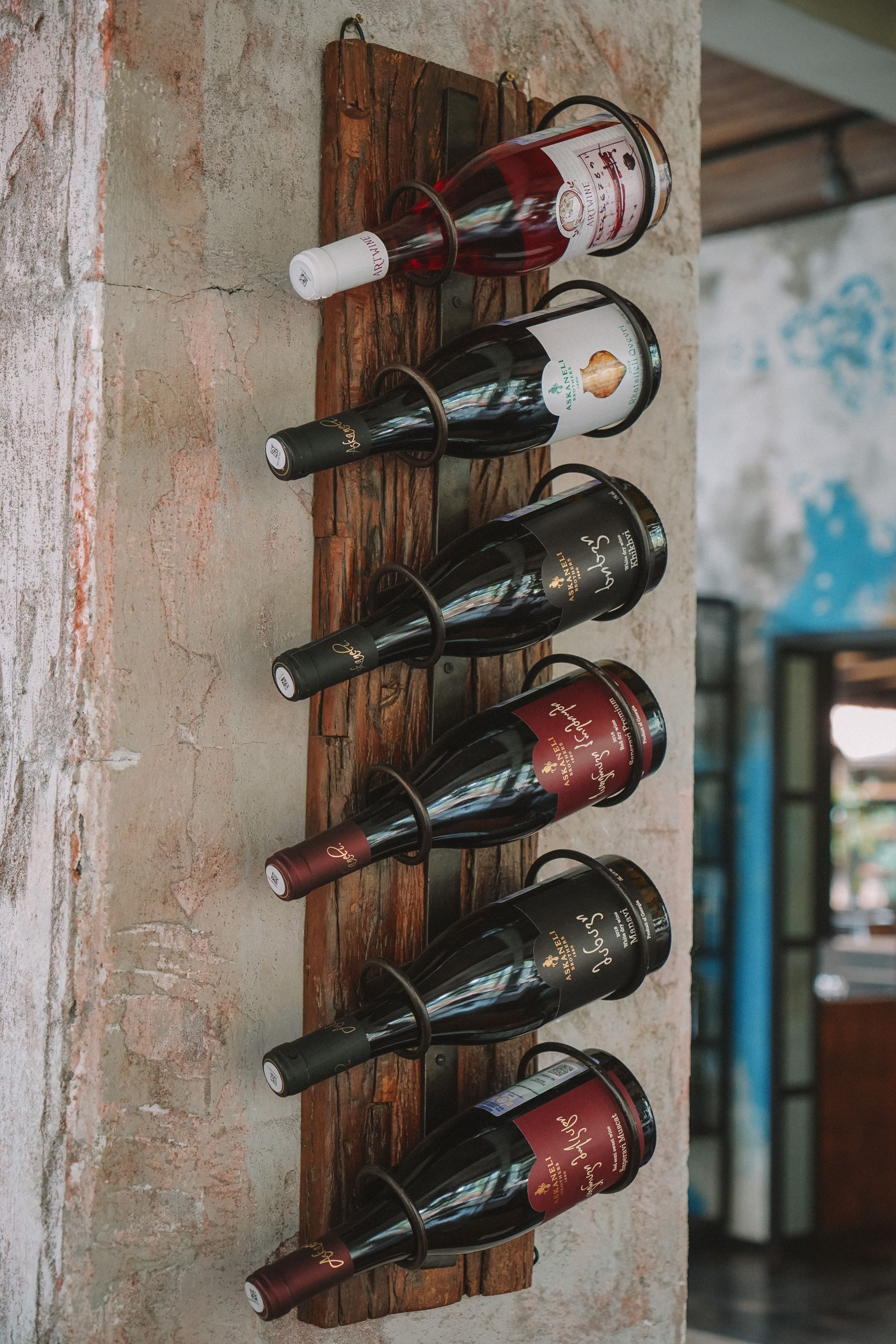
Why is Proper Wine Storage Important?
Proper wine storage helps maintain the taste, aroma, and structure of the wine over time.
Wine is a delicate beverage that can be easily affected by environmental factors such as temperature, humidity, light, and vibration.
By storing wine properly and correctly, you can enhance its aging potential and ensure that it remains enjoyable for years to come.
Ideal Storage Conditions
Temperature
The temperature at which you store wine is critical to its long-term quality.
Fluctuations in temperature can cause the wine to expand and contract, leading to potential damage to the cork and accelerated aging.
The ideal temperature for storing wine is between 45°F (7°C) and 65°F (18°C). It's important to avoid storing wine in areas prone to extreme temperature changes, such as near ovens or windows.
Humidity
Humidity levels play a significant role in wine storage. Maintaining an appropriate level of humidity is crucial to prevent the cork from drying out.
Aim for a humidity level of 50-80%. Low humidity can cause the cork to shrink and allow air to enter the bottle, resulting in oxidation and spoilage.
On the other hand, high humidity may lead to mold growth. Consider using a humidifier or placing a shallow dish of water in your storage area to regulate humidity.
Light
Light exposure can have a detrimental effect on wine, especially when it comes to ultraviolet (UV) rays.
UV rays can degrade the wine's delicate compounds, leading to premature aging and off-flavors.
To protect your wine, store it away from direct sunlight and artificial light sources.
Choose a dark or dimly lit area, such as a cellar or a dedicated wine cabinet, to keep stored wine to minimize light exposure.
Vibration
Excessive vibration can disturb the sediment in wine, negatively impacting its flavor and clarity.
Avoid storing wine in places prone to frequent movement or near appliances that generate vibrations, such as washing machines or refrigerators.
Opt for a stable and vibration-free location to ensure wine quality.
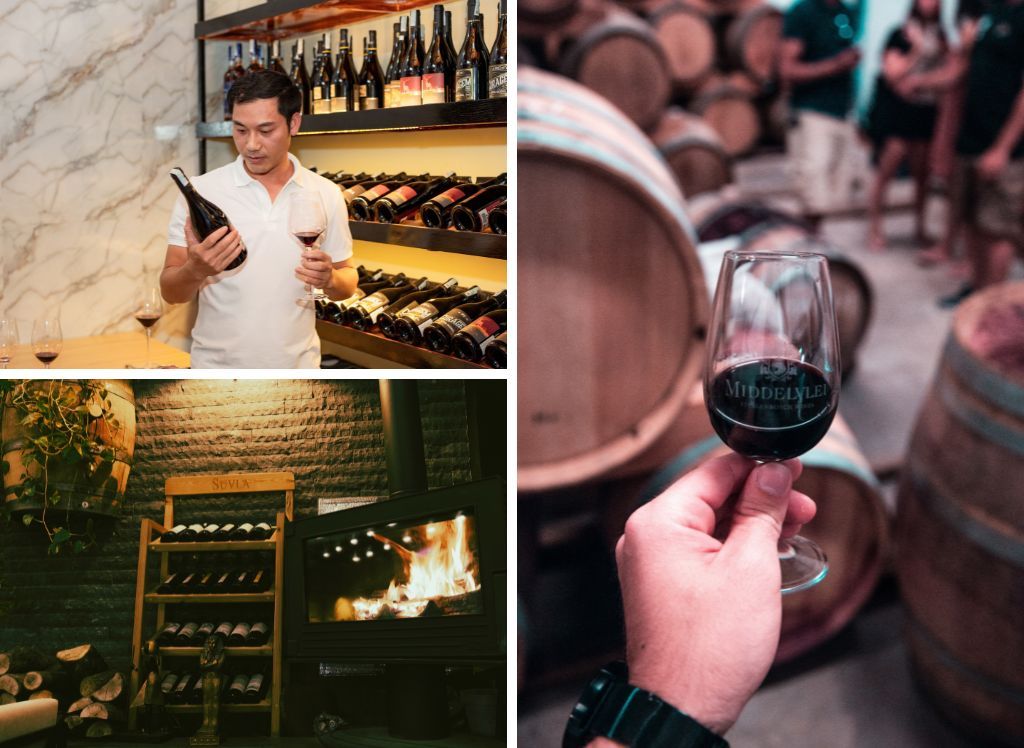
General Secrets and Suggestions for Wine Storage
In addition to the ideal storage conditions mentioned above, here are some general tips to consider for storing wine at home:
- Store wine bottles horizontally: Storing wine bottles on their side helps keep the cork moist, which is essential for preventing air from entering the bottle. This position also helps to ensure that the wine and the cork remain in contact, preserving the seal.
- Keep the storage area well-ventilated: Proper airflow within the storage area is crucial to maintaining optimal wine storage conditions. Adequate ventilation helps prevent mold growth and keeps the air fresh. Make sure the storage area has some air circulation to avoid stagnant air.
- Avoid storing wine in the kitchen: The kitchen is often subject to fluctuating temperatures, high levels of light exposure, and vibrations from appliances. These factors can negatively affect the quality and aging process of your wines. It's best to choose a dedicated storage area away from the kitchen, and in a wine cooler.
- Do not store wine in the refrigerator long-term: While it's acceptable to chill white wines or sparkling wines in the refrigerator before serving, long-term storage in the refrigerator is not recommended. Refrigerators are too cold and lack the ideal humidity levels for wine storage, which can lead to premature aging and off-flavors. If you need temporary storage, limit it to a few days.
- Keep an inventory and organize your collection: It's helpful to keep track of the wines you have and their storage conditions. Consider using a wine cellar management app or keeping a notebook to record the wines you own, their vintage, and their intended drinking window. Organizing your collection will make it easier to locate specific bottles and ensure they are stored properly.
Storing Red Wine Bottles
Red wines generally benefit from aging, and proper storage is vital to maximize their potential.
In addition to following the general table wine storage tips mentioned above, consider the following specific recommendations for storing red wines:
Temperature for Red Wines
For most red wines, the ideal storage temperature falls between 55°F (13°C) and 60°F (15°C).
This slightly cooler temperature range helps slow down the aging process and preserves the wine's structure and complexity.
Avoid storing red wines at room temperature if it exceeds 65°F (18°C), as it can accelerate the aging process and lead to a loss of freshness.
Aging Potential of Red Wines
Not all red wines benefit from long-term aging. Some are meant to be consumed relatively young, while others have the potential to develop further complexity and character with age.
It's essential to research the specific red wine you have or intend to purchase to determine its optimal aging potential.
This information can be found on the producer's website, reputable wine publications, or through expert advice from wine professionals.
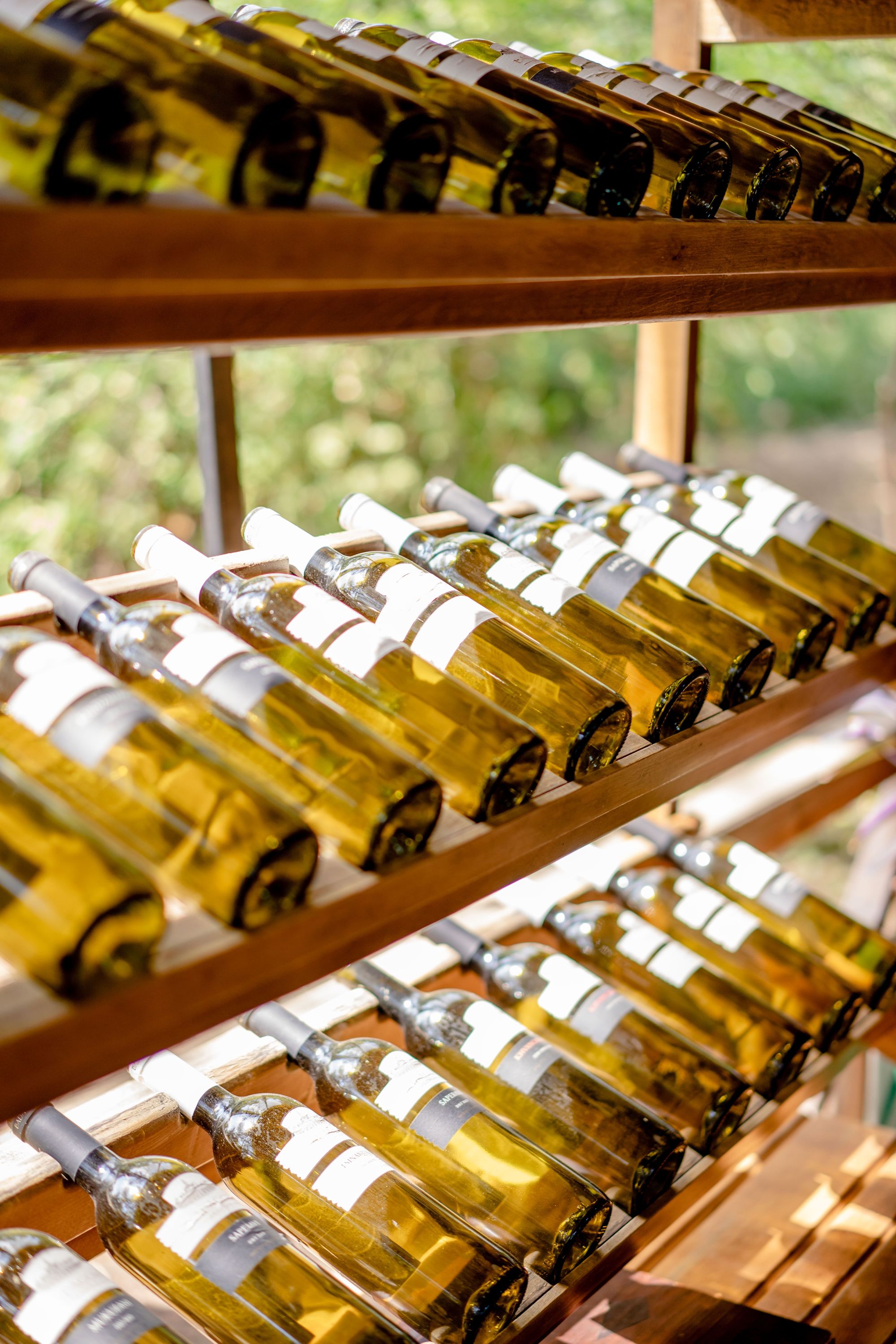
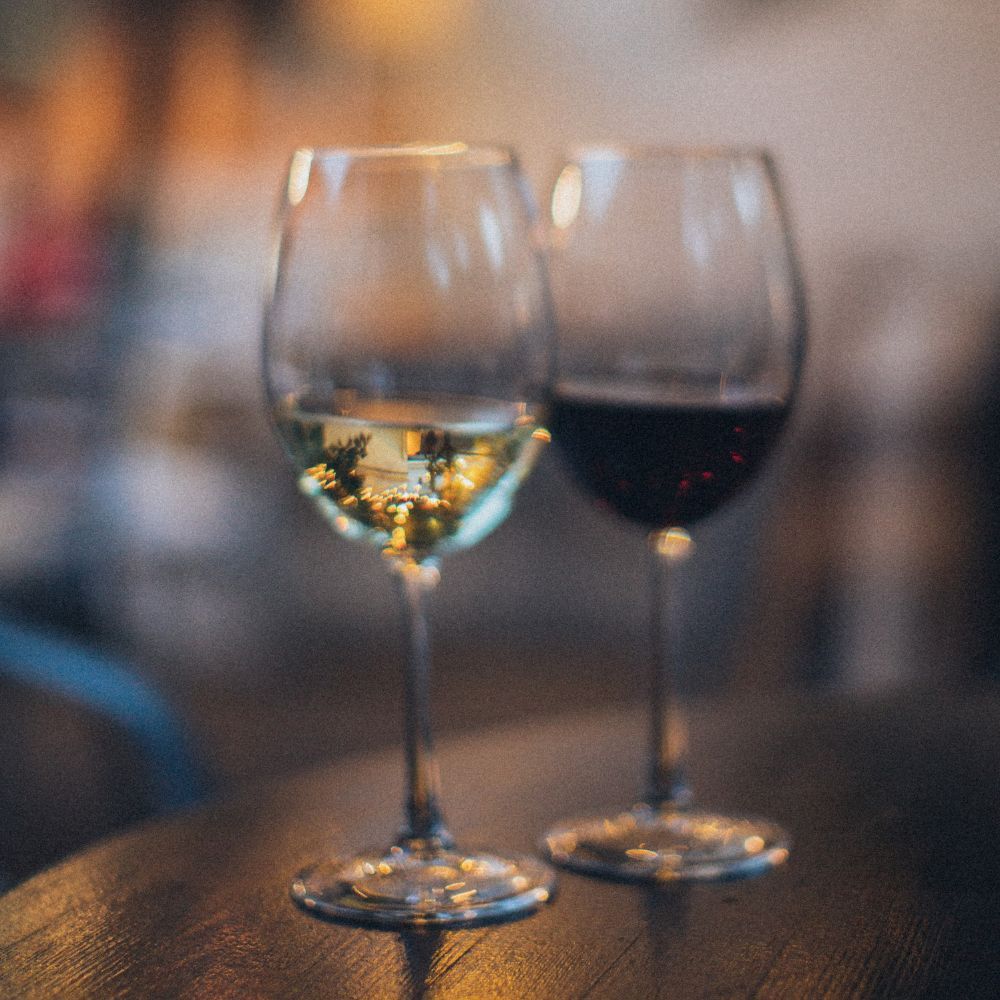
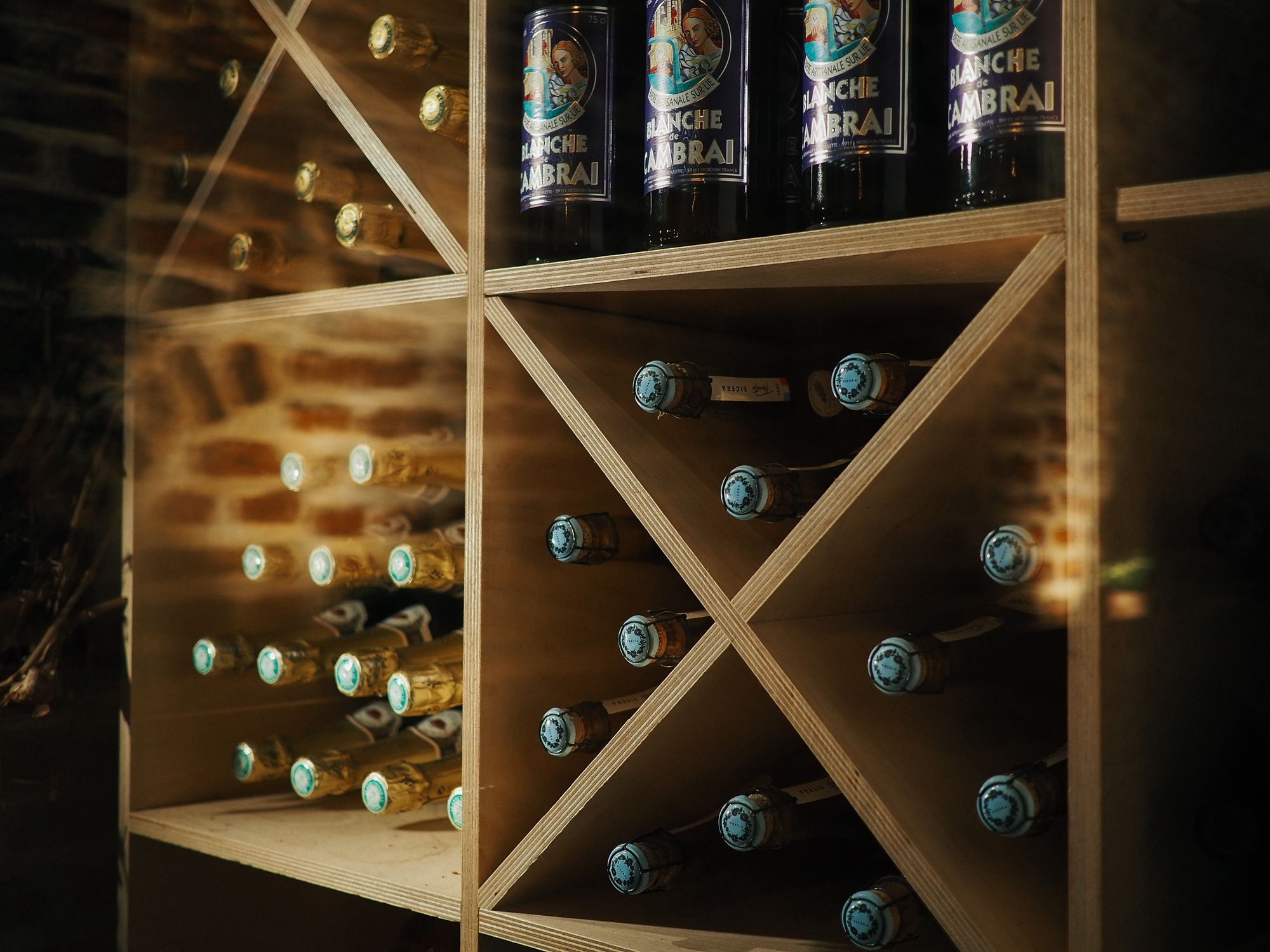
Storing White Wines
White wines are typically consumed at a younger age and require different storage conditions compared to red wines. Here are some tips for storing white wines:
Temperature for White Wines
White wines should be stored at a temperature between 40°F (4°C) and 50°F (10°C). This temperature range helps preserve the white wine still's freshness, acidity, and delicate flavors.
Storing white wines at higher temperatures can cause them to age prematurely and lose their vibrancy.
Oxygen Exposure and White Wines
White wines are more sensitive to oxidation compared to red wines. To minimize oxygen exposure, ensure a tight seal on the bottle.
When re-corking a partially consumed bottle of wine, consider using a vacuum wine stopper or a wine preservation system to remove excess air from the bottle.
It's best to consume white wines within a few days after opening to enjoy them at their best.
Storing Sparkling Wines
Sparkling wines, including Champagne and Prosecco, require special care due to their carbonation. Here are some tips for storing sparkling wines:
Temperature for Sparkling Wines
Sparkling wines should be stored in a cool environment with a temperature around 45°F (7°C). This temperature helps maintain the carbonation and prevents the cork from loosening.
Avoid storing sparkling wines at temperatures above 55°F (13°C), as it can cause excessive pressure buildup and potential cork failure.
Upright Storage for Sparkling Wines
Unlike still wines, sparkling wines should be stored upright to minimize the surface area of the wine in contact with the cork.
This helps preserve the effervescence and ensures that the carbonation remains intact.
Storing sparkling wines horizontally can lead to the loss of bubbles and a less enjoyable drinking experience.
Frequently Asked Questions
What is the best way to store wine at home?
The best way to store wine at home is in a cool, dark place that has consistent temperature and proper humidity levels. The ideal temperature for storing wine is between 45-55°F (7-13°C). Humidity levels should be kept at around 70%. Wine should also be stored on its side so that the cork remains damp and does not dry out, allowing air to enter the bottle and spoil the wine.
Can I keep wine without a wine fridge?
Yes, you can keep wine without a fridge, but it won't last as long. Wine should be stored at a cool, dark place, such as a basement or cellar, where the temperature stays between 45-65°F (7-18°C). If you can't keep the wine in a cool place, you can store it in the fridge to help it last longer. Make sure to always store your wine with it in a dark place, as light can cause the wine to spoil more quickly.
How long can red wine last unrefrigerated?
To preserve red wine after opening, keep it in a cool dark place with a cork for 3-5 days. Red wines with more tannin and acidity last longer than those with less. For instance, a light red like Pinot Noir will not last as long as a rich red such as Petite Sirah. Some wines may even taste better after the first day of being opened.
Summary
Proper wine storage is essential for preserving the quality, flavors, and aromas of your favorite wines.
By understanding and implementing the ideal storage conditions of temperature, humidity, light, and vibration, you can ensure that your wines age gracefully and remain enjoyable over time.
Maintain a temperature range between 45°F (7°C) and 65°F (18°C) and a humidity level of 50-80% to create a stable environment for wine storage.
Avoid direct sunlight and artificial light, minimize vibrations, and keep the storage area well-ventilated.
Specific wine types require additional considerations. Red wines benefit from slightly cooler temperatures (55°F to 60°F) for aging, while white wines should be stored at a cooler temperature range of 40°F to 50°F. Sparkling wines require cooler storage temperatures (around 45°F) and upright positioning to maintain carbonation.
Remember to store wine bottles horizontally to keep the cork moist, maintain an organized wine collection, and avoid long-term storage in the refrigerator.
By following these guidelines, you can ensure that your wines age gracefully and retain their optimal quality, allowing you to enjoy them to the fullest extent.
In search of a wine cooler? Explore our best wine fridge recommendations to find the perfect fit for your unique requirements.
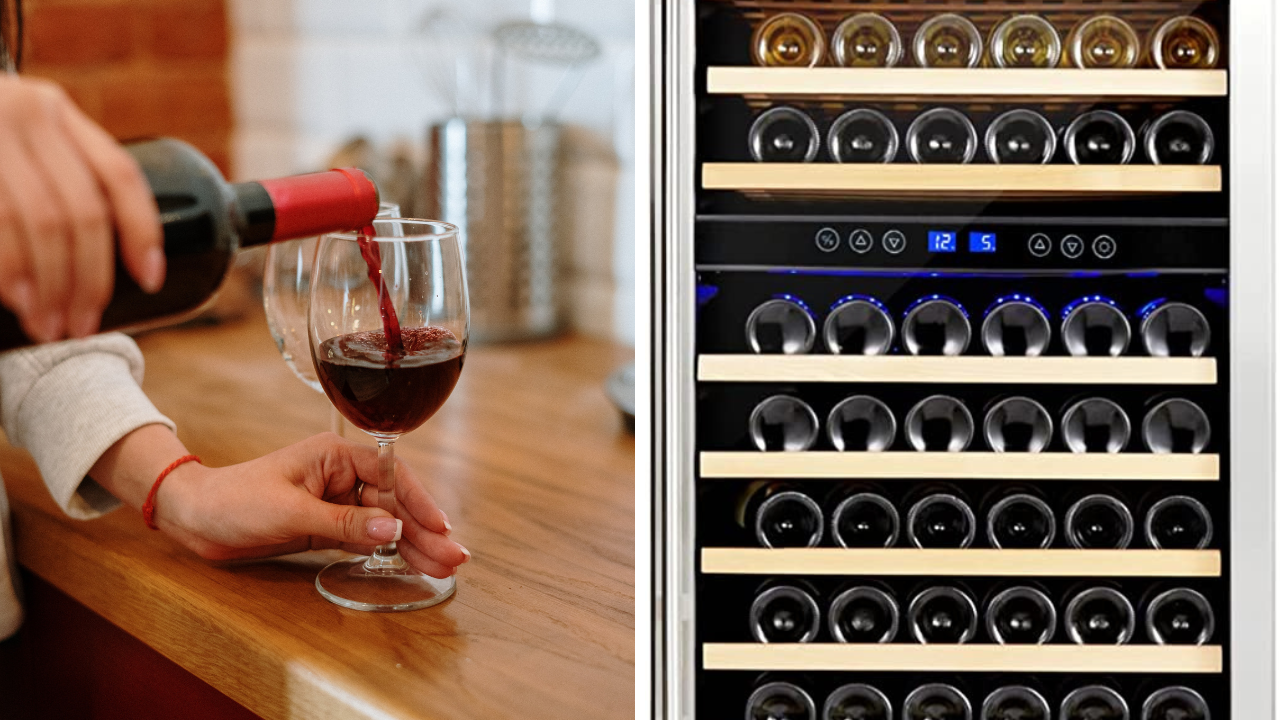
You may also enjoy reading our top picks for the best under counter wine fridge.
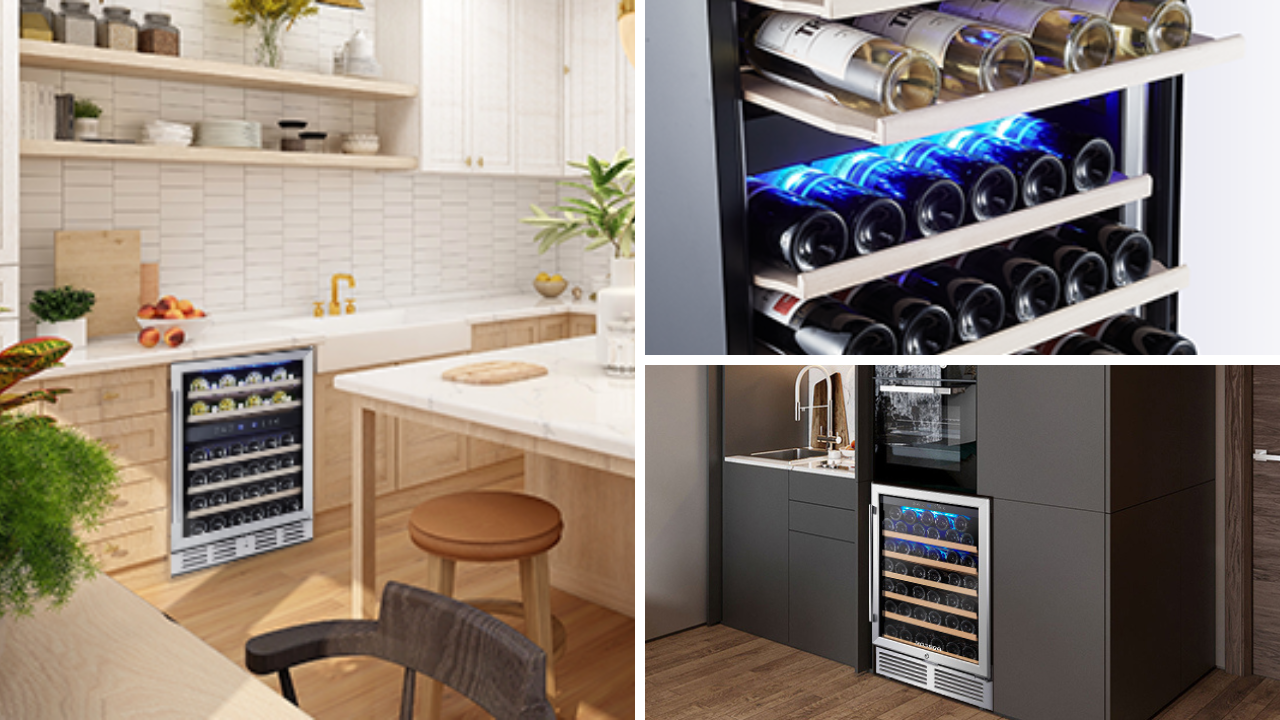
If you are tight on space then check out our picks for the best slim wine fridge.
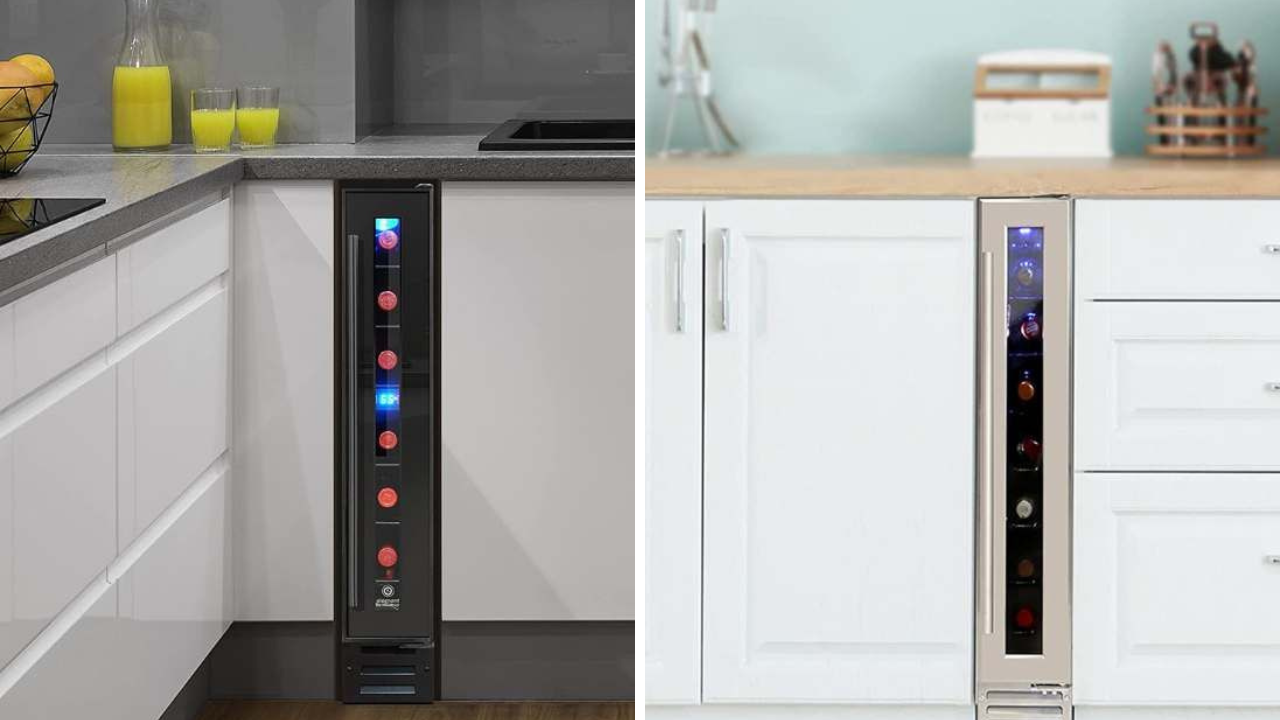
Or maybe you have a large wine collection then you should check out our article on the best large wine fridge.
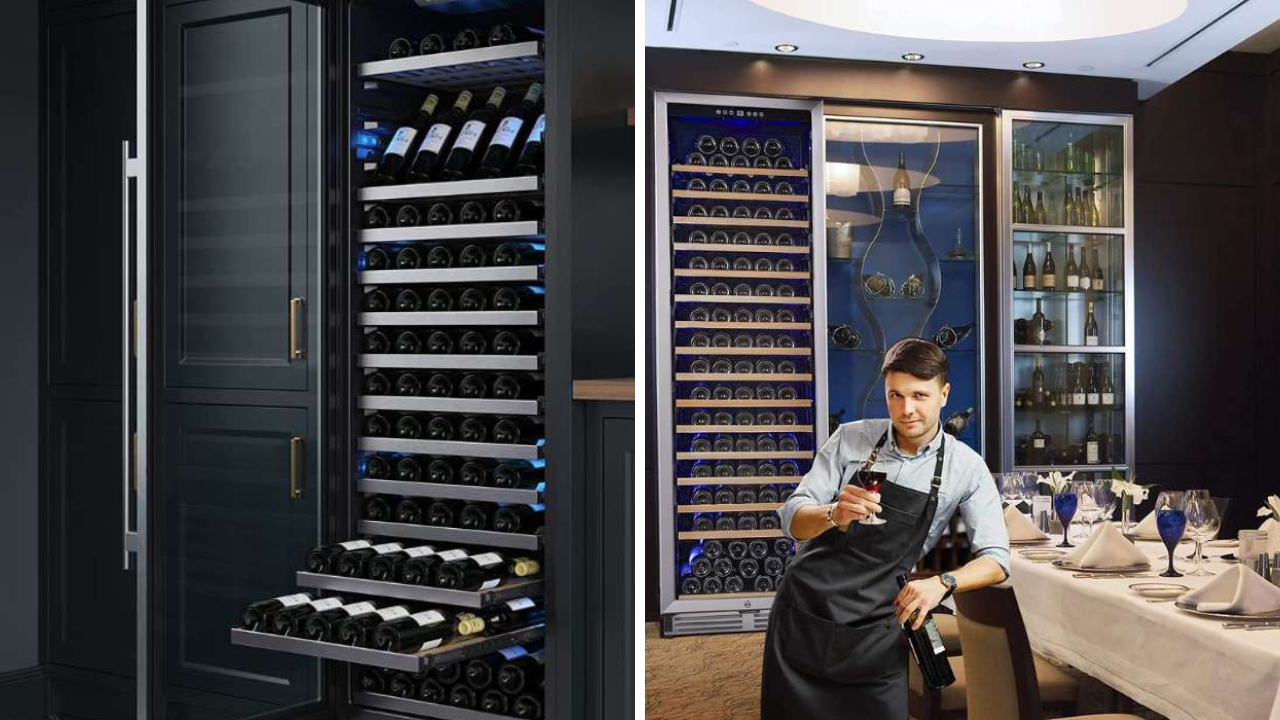
Cheers to creating an ideal wine storage environment at home!
IncredibleRatings










